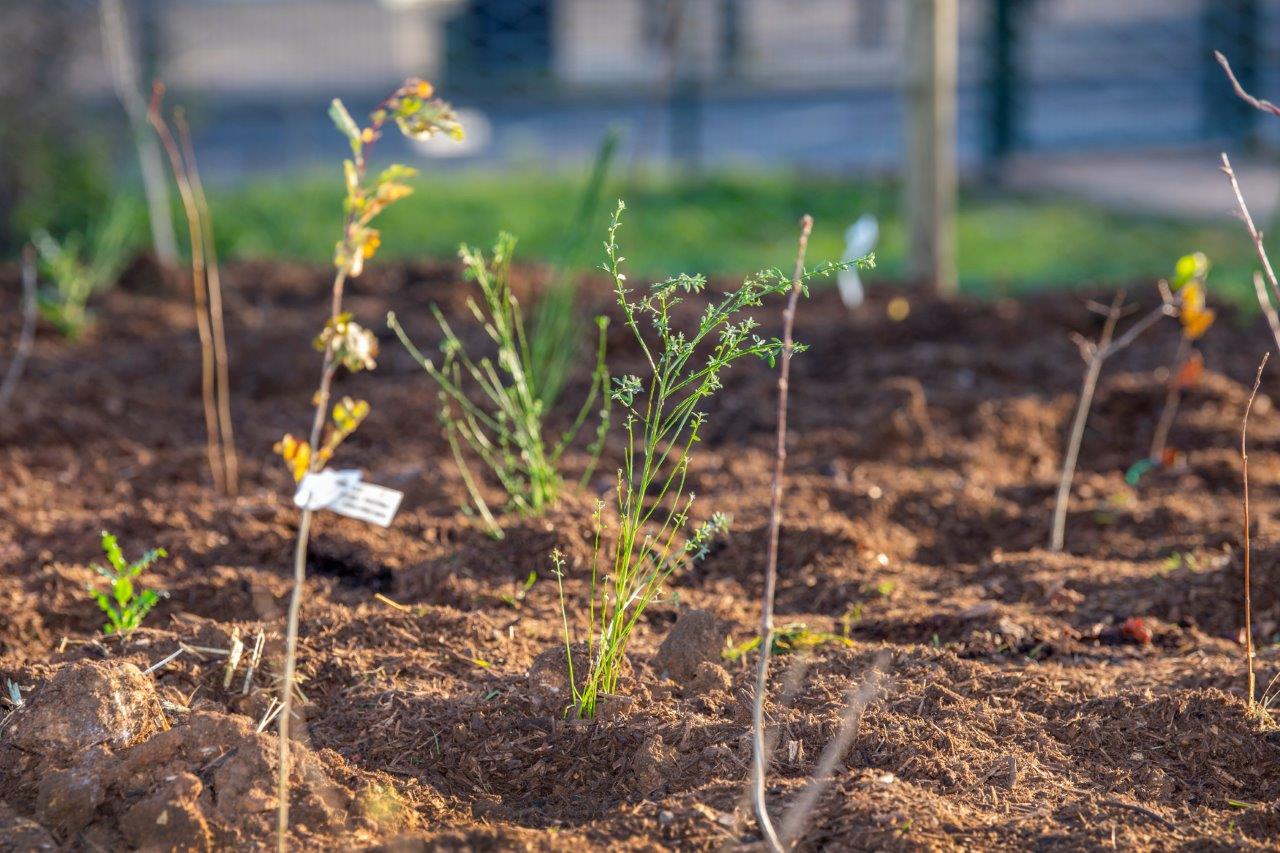Rob Chambers is the national lead for geography and the trust sustainability lead at Astrea Academy Trust, which comprises 26 schools. We spoke to him about working across a multi-academy trust to embed sustainability.

What is your role?
I am part of Astrea Academy Trust’s Central Education team, and my role is national geography lead, leading on geography education across the trust’s secondary academies. In addition, I have a voluntary role as the trust’s sustainability lead, leading on and coordinating our sustainability work across all of our primaries and secondaries alongside our chief operating officer (COO) Jonathan Timmis, working with eco-leads and senior leadership eco-links in our academies.
How many schools are in your academy trust?
We have 26 schools in total spread throughout South Yorkshire and Cambridgeshire. 17 are primary schools (all of which are in South Yorkshire), and the rest are secondary (Cambridgeshire, Barnsley, Doncaster and Sheffield).
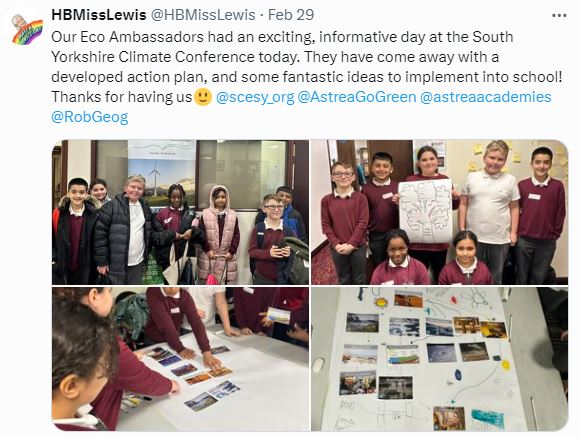
Why is sustainability important to you and your trust?
Astrea Academy Trust fully recognises the importance of integrating sustainability within all aspects of the work that we do. Our CEO and COO are committed to supporting this, which has been crucial for driving forward our successes so far in embedding sustainability across both our academies and central team. The trust’s inaugural work on sustainability was a sustainable estates strategy launched back in 2022 by Jonathan Timmis (our COO), this was a crucial starting point which set the foundation for the work that we have gone on to do. Not only did it acknowledge the importance of investing in infrastructure to reduce costs and carbon footprint, but also the importance of considering all aspects of activities in our academies through an environmental lens, including the initial push for our Go Green Campaign.
To take this forward we used the Department for Education’s Climate Change policy as a framework on which to base our initial thoughts and actions and to plan ahead. On the basis of this we later created our Climate Action Plan, which sets out our goals and actions for tackling climate change and promoting sustainability.
Personally, I’ve always been passionate about global change and the environment, thanks to my geographical background. This personal interest has driven my dedication to embedding sustainability within education, and it is a privilege to be able to lead on driving forward our vision for sustainability through coordinating our GoGreen strategy.
We believe it’s crucial to teach our students about global change and sustainability. We want them to know how they can be part of the solution and help build a sustainable future. We also want to ensure that they have the opportunity to develop the skills and knowledge required for the growing green jobs sector.
It’s important for our students to understand how their decisions affect both local communities and the wider world and understanding social and environmental justice issues related to climate change and sustainability is essential to help them develop as global citizens who can make informed decisions.
In short, by fostering a culture of sustainability across our trust, we’re preparing our students to be informed, proactive members of society who can make a positive impact on the world whilst actively advocating for and demonstrating the principles and practices that we teach our students to ensure that they are a lived reality.
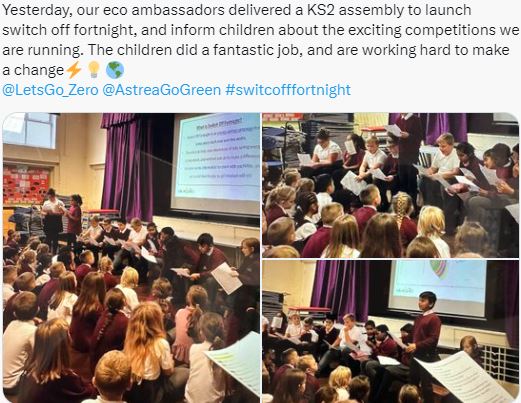
Have you had any training around sustainability or climate education?
In 2019 I undertook an online training course to become a UN Climate Change Accredited Teacher, which was run by UN CC:e-Learn in conjunction with eduCCate Global.
I have also taught climate change as part of the AQA GCSE and I have taught a climate change module as part of the OCR A Level specification which launched in 2016. I have attended numerous sustainability webinars online, including through Let’s Go Zero as well as other organisations, and attended conferences such as the ASCL Conference for a Sustainable Future.
I also network widely via X (formerly known as Twitter) with other sustainability leads and those involved in climate change and sustainability education.
What activities have you undertaken?
The first step in our sustainability plan was to ask each school to nominate an eco-lead. It was crucial that this individual was genuinely interested and motivated to take on the role, as they really need to be the driving force within their school. Additionally, we requested that schools nominate a senior leadership team (SLT) eco-link to ensure there was representation at that level, which is vital for driving initiatives forward.
Each eco-lead was then tasked with setting up an eco-committee, comprising students from as many year groups as possible. This inclusivity ensures a broad representation and engagement across the school community.
As the sustainability lead, I organise meetings of eco-leads once a term and provide termly bulletins. These bulletins showcase and share good practices happening within our schools, fostering a culture of collaboration and continuous improvement.
Our regional operations managers play a key role by regularly touching base with the eco-leads in schools. They help promote the GoGreen strategy, working closely with me and the COO to ensure alignment and support.
When we launched the GoGreen strategy in October 2022, we asked all our academies to focus on energy, alongside any other initiatives they wished to pursue. To support this, we signed up all our schools centrally to the Let’s Go Zero campaign. We also support three trust-wide events annually: Switch Off Fortnight in November, the Sustrans Walk and Wheel in the spring term, and World Environment Day in June.
For World Environment Day in June 2023, which focused on plastic pollution, we encouraged schools to raise awareness through social media. Two of our eco-committees visited a local waste recycling plant and participated in a workshop on plastics recycling with the charity Recoup.
Beyond these trust-wide initiatives, schools undertake their own activities, such as creating school gardens, organising community litter picks, and building bug hotels. These activities focus on various topics, including biodiversity, recycling, and litter. Some of our primary schools’ eco-committees have even collaborated to hold their own mini-COP-26 events, and several South Yorkshire schools have participated in the South Yorkshire Schools Climate Conference.
In July 2023, after running the GoGreen strategy for a year, we evaluated our progress. Based on the successes we observed, we decided to adopt a more strategic approach moving forward. We recognized the importance of integrating our efforts in a holistic manner, further strengthening the links between the central team and our academies regarding sustainability. Consequently, we decided to develop our first Climate Action Plan. Our goal is to evaluate our work at the end of each academic year to inform the development of a strategic plan for sustainability for the following year.
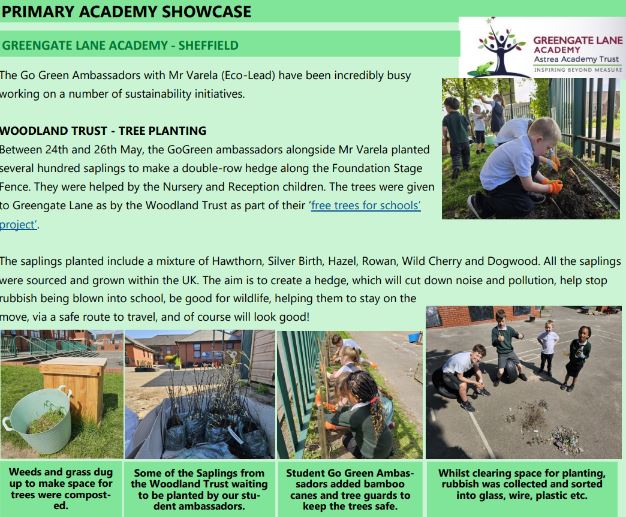
Tell us about the climate action plan.
Our Climate Action Plan (CAP) embodies our trust’s philosophy and approach to sustainability, with objectives set across various timescales and sustainability themes at the trust level. When we began drafting our CAP, there was limited guidance on the format, so we decided to proceed with our vision of what it should be. The key was to create a holistic plan that encompassed the entire trust, linking the efforts of our academies and the central team.
We started with a comprehensive meeting that included me as the trust sustainability lead, Jonathan Timmis as COO, and all major stakeholders from the operations side, such as the chief financial officer, regional operations managers, head of IT, head of estates, and head of catering. As a member of the Central Education team, I was able to represent the curriculum perspective.
During this meeting, we outlined what each area was already doing and had achieved regarding sustainability. We then set clear objectives under the following headings: energy, waste, water, IT, operations, healthy living, school grounds, biodiversity, climate literacy, green careers, and information campaigns. These objectives form the foundation of our CAP.
We structured our CAP by starting with the context and our ambition as a trust. We then established our sustainability leadership structure, which includes leadership at both the trust and academy levels. Our work aligns with the four strategic aims of the Department for Education’s sustainability and climate education strategy and is underpinned by the ten sustainability themes outlined in the Eco-Schools framework. Current objectives and examples of achievements then make up the bulk of the CAP.
In addition to our Trust Climate Action Plan, we have tasked each academy with creating their own mini-CAPs. These plans align with trust priorities but are also tailored to reflect each academy’s unique context and are driven by the students in the eco-committees. Currently, several of our academies now have these plans in place, and over the next year, we will work with those that do not yet have them.
Our goal for the end of the 2024–25 academic year is to ensure that every academy not only has an eco-lead and eco-committee but also has its own mini-Climate Action Plan outlining its objectives. This approach ensures a cohesive and comprehensive strategy for sustainability across our entire trust.
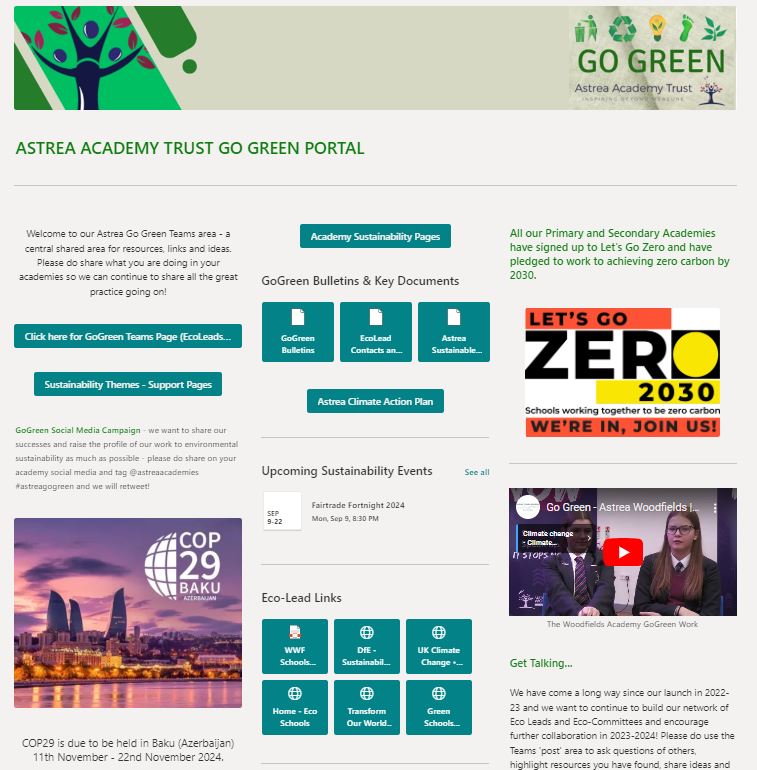
What benefits have you seen?
One of the most rewarding aspects of our sustainability initiatives has been witnessing the enthusiasm of the students in our eco-committees. Their creativity and drive have been instrumental in pushing forward various projects and ideas. It’s been incredibly positive to see students having their voices heard and engaging with each other on climate change and sustainability. This engagement has led to real innovations and a sense of responsibility among students to bring about change within their academies.
We are also working to ensure that students can collaborate with academy operations managers, allowing their voices to be heard and enabling them to see the tangible differences being made. For instance, as part of our energy-saving initiatives, we share academy energy usage figures with students. This transparency supports students in asking questions about energy use and identifying practical ways to make a difference.
We have also seen real potential for strengthening community links. For example, one of our schools is developing a school garden and is collaborating with a local rotary club. They are also receiving support from Skanska, a road construction company as part of their community outreach. As part of this students from one of our eco-committees have participated in a series of climate change workshops. Additionally, some of our primary schools have engaged in community litter picks, and we continue to focus on strengthening these community connections.
From the trust’s perspective, there are multiple benefits, including financial savings, environmental improvements, and fulfilling our ethical and moral responsibility to act on sustainability. It also represents good governance. Our efforts have been recognized with the Chartered Governance Institute’s 2023 award for social governance, where we were shortlisted alongside large companies such as John Lewis and Legal & General. We also recently won the Environmental Trust of the Year award in the MAT Excellence Awards. Some of our schools have also now achieved the Eco Schools Green-Flag award.
What barriers have you faced?
Time and money are the primary barriers we face in implementing our sustainability plan, which is a common challenge for most schools. While we have been able to use operational funding for sustainability investment in initiatives such as photovoltaics, increased building and roof efficiencies in energy retention and installing LED lights, there is little to no funding available specifically for more individual sustainability projects at the academy level. Projects like school gardens and eco-committee activities often rely on fundraising efforts or small grants, which are not only limited but also time-consuming to secure. Funding is often also targeted and not necessarily available to all academies. For example, a small number of our academies, those in Doncaster, have been eligible for funding from the National Education Nature Park (NENP) which they have been able to use to good effect to increase biodiversity in their grounds (for example Woodfields Academy).
Our eco-leads, who are crucial to driving these initiatives, take on these roles voluntarily without additional time or financial support. This inevitably limits what can be achieved. Additionally, time constraints and other pressing priorities, such as Ofsted preparation, can understandably divert focus away from sustainability efforts at times. Balancing these priorities can be challenging and sometimes acts as a barrier to ensuring all schools are fully engaged. For instance, while we have mini-CAPs in place for several academies and many have eco-leads and eco-committees we recognise the need to re-launch our efforts in some academies in 2024–25 to maximise buy-in across the board.
This ebb and flow is natural in schools, given their busy environments and the multitude of priorities that need to be managed. However, our trust leaders are deeply committed to supporting sustainability work. We continue to collaborate and explore ways to overcome these barriers, but in a fast-paced educational setting, this remains an ongoing effort.
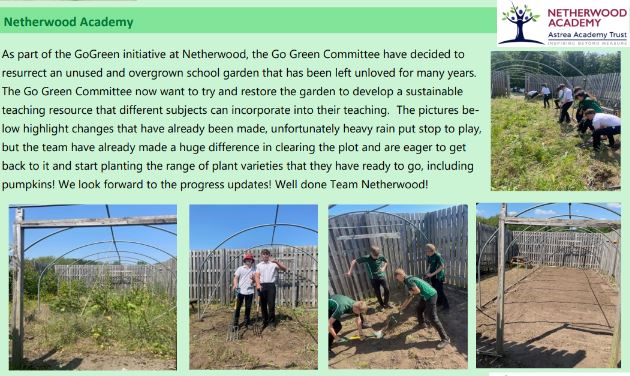
How do you communicate with your schools?
I have found that Microsoft Teams is one of the best ways to coordinate and communicate across our large number of schools. It allows eco-leads to contact each other and contribute to discussions and ultimately, I hope it will foster a self-driven network. While I coordinate and moderate, my goal is for eco-leads to seek advice and share good practices amongst each other.
I frequently post about upcoming sustainability events, important links, and key stories. I also provide access to bulletins, meeting agendas, and videos of meetings for those who can’t attend live. Additionally, I have been using SharePoint to create a GoGreen hub, which includes a homepage, and academies showcase page where each academy will eventually have their own sustainability page to share good practice and news of what their eco-committees are working on. I am also developing a sustainability resources page based on the ten topics that sit under the Eco-Schools framework.
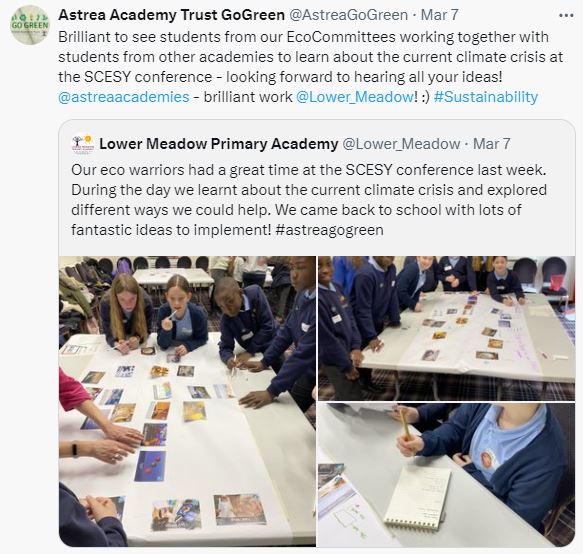
How are decisions made about what projects to take part in?
As mentioned, we have three trust-wide projects that we encourage all academies to participate in each year. This central guidance is particularly helpful for schools with limited time, as it provides focus, resources, and links to save time. This year, we have asked schools to concentrate on energy and biodiversity.
Beyond these trust-wide projects, we encourage academies to pursue their own initiatives. We believe the most significant gains come from the innovation and drive of the eco-committees within each school. For example, one school noticed a lot of plastic bottles left after sports day the previous year, so they implemented a water refilling station at the next sports day to reduce disposable bottle use.
We have also encouraged all academies to sign up for the National Education Nature Park, aiming to have all schools enrolled by the end of 2024–25. This approach ensures a balance between central guidance and individual school innovation, maximising the impact of our sustainability efforts.
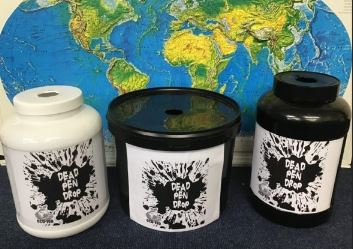
How do you find out about projects and funding?
I use social media a lot, particularly X (formerly known as Twitter), where I follow various individuals and organisations involved in sustainability. We also have the Astrea Go Green X account, which helps us connect with others doing similar work. Additionally, I’m part of the UK Schools Sustainability Network operations group, which is a great source of funding ideas.
I’m in regular contact with the climate advisers from Let’s Go Zero, who provide numerous ideas and information about competitions open to schools. I make sure to flag these opportunities and consolidate them for our schools. I also network with one of the coordinators for the new Climate Ambassadors scheme.
Furthermore, some of our schools in Doncaster are eligible for the National Education Nature Park grant. Two schools have already been awarded £10,000, and I’m currently working with two more schools to access this funding in the current round.
Do you think your approach would work in other schools?
Absolutely. I believe our approach could be successfully implemented in other schools. However, I would strongly advocate for a holistic sustainability policy, and this requires robust connections and commitment from both the central team and operations and the academies and curriculum teams.
A key element is having a leadership structure in place which can effectively bridge these two areas. I have been very lucky as a sustainability lead as my background as a teacher in our academies has given me a deep understanding of the practical working of our academies and the curriculum but additionally as a member of the central team, I have access to the operations teams and the full support and leadership of the COO. This dual perspective has been invaluable in helping to drive our sustainability initiatives forward by being able to connect the two and working to foster a truly holistic approach to sustainability within the trust.
We still have a lot to do, but our priorities and objectives reflect curriculum as well as operations. For example, in 2024–25 we are looking to embed climate literacy and education into our curriculum and strengthen our work on green careers.

